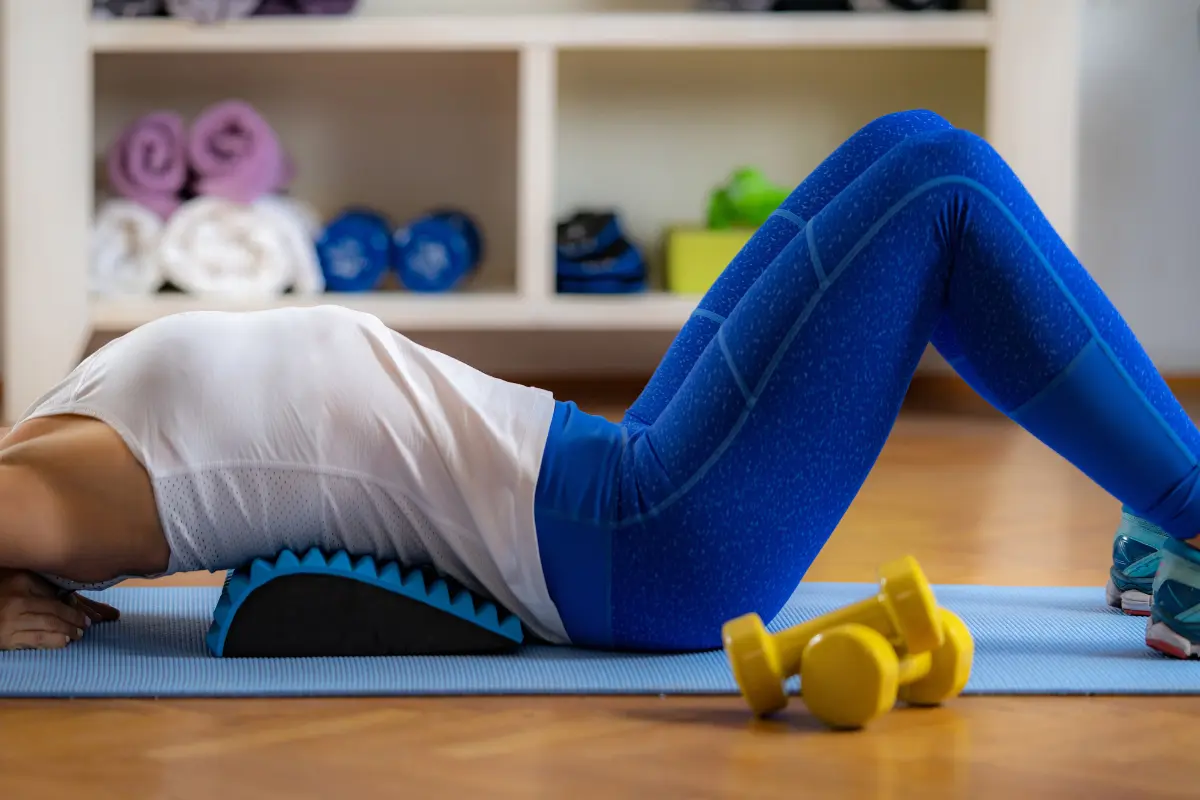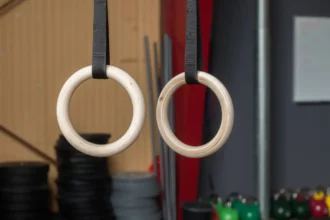Gymnastics is a sport that demands extraordinary strength, flexibility, and control, particularly in the upper body. The complex routines that gymnasts perform involve high-flying stunts, intricate balance work, and powerful forceful pushes, placing significant stress on their joints.
Among the many physical challenges they face, shoulder injuries are among the most concerning—especially shoulder dislocation, which can be both painful and potentially career-threatening.
What Is a Shoulder Dislocation?
The shoulder is a ball-and-socket joint, offering a wide range of motion in all directions. The humeral head (the “ball”) fits into the glenoid (the “socket”) of the scapula (shoulder blade). This joint structure allows for flexibility and mobility, but it also makes the shoulder more prone to dislocation, especially when subjected to extreme forces or unnatural movements.
A shoulder dislocation occurs when the humeral head is forced out of its socket, disrupting the normal alignment of the joint. Dislocations can be anterior (toward the front of the shoulder) or posterior (toward the back). Anterior dislocations are the most common in sports like gymnastics, as the shoulder is often subjected to forces that pull it forward.
Are Shoulder Dislocations Common in Gymnastics?
While shoulder injuries are fairly common in gymnastics, shoulder dislocations are less frequent than other types of injuries like sprains, strains, and tendonitis. However, the risk of dislocation increases in specific situations where the shoulder is subjected to extreme forces, awkward positions, or repeated stress.
Several factors contribute to the risk of shoulder dislocations in gymnastics, including:
1. High-Impact Movements
Gymnasts frequently perform high-impact movements that place significant stress on their shoulder joints. These movements include:
- Vaulting: The explosive, high-speed impact with the vaulting table can force the shoulder into hyperextension or twisting positions, potentially leading to dislocation.
- Uneven Bars and Parallel Bars: During swinging, release moves, or dismounts, the shoulders bear heavy forces, especially when the arms are extended in wide positions. A fall or improper landing can result in a shoulder dislocation.
- Floor Routines: Tumbling passes, handstands, and certain acrobatic elements generate intense load on the shoulders. A sudden fall or improper technique during these routines can result in a shoulder dislocation.
2. Excessive Mobility or Hyperextension
Flexibility is vital in gymnastics, particularly in the shoulder joint, which needs a wide range of motion for many skills. However, excessive flexibility—referred to as hypermobility—can sometimes be detrimental. When the shoulder joint is overly flexible, it becomes less stable, and the humeral head can slide too far out of the socket. Hyperextension can increase the likelihood of dislocation, especially during movements that push the shoulder joint beyond its normal limits.
3. Weakness or Imbalance in Shoulder Muscles
Strong, well-balanced muscles around the shoulder, particularly the rotator cuff, are essential for joint stability. If these muscles are weak or imbalanced, the shoulder joint becomes more vulnerable to injury. Gymnasts who neglect rotator cuff training or who perform repetitive overhead movements without sufficient strengthening exercises may find that their shoulder joints lack the necessary stability, increasing the risk of dislocation.
4. Poor Technique or Landing Errors
In gymnastics, even the smallest misstep can lead to injury. Poor technique, especially during high-impact movements or misjudged landings, can place excessive stress on the shoulder joint. For example:
- Landing with arms outstretched can force the shoulder into a position of instability, leading to a dislocation.
- Performing a dismount incorrectly, particularly from high bars or rings, can also result in the shoulder being subjected to forces that cause dislocation.
5. Repetitive Stress and Overuse
Gymnasts often train for long hours, performing the same movements repeatedly. This repetitive motion can cause wear and tear on the shoulder joint, gradually weakening the tendons and ligaments that stabilize the joint. Over time, the cumulative stress may make the shoulder more prone to dislocation, especially when more force is applied during training or competition.
Symptoms of a Shoulder Dislocation
When a gymnast experiences a shoulder dislocation, the symptoms are usually immediate and severe. Common signs include:
- Severe pain in the shoulder joint
- Visible deformity of the shoulder (in the case of an anterior dislocation, the shoulder may appear visibly “out of place”)
- Inability to move the arm or shoulder
- Numbness or tingling in the arm (due to nerve compression)
- Swelling and bruising around the shoulder
In some cases, the dislocated shoulder may spontaneously relocate itself, but it still requires immediate medical attention to avoid long-term damage. Even if the shoulder relocates on its own, it is important to seek professional care to prevent further injury.
Preventing Shoulder Dislocations in Gymnastics
While it’s impossible to entirely eliminate the risk of shoulder dislocations in gymnastics, there are several strategies athletes can use to reduce the likelihood of this injury:
1. Strengthen the Shoulder Muscles
A strong rotator cuff and shoulder muscles provide the stability needed to protect the joint. Gymnasts should focus on exercises that specifically target the shoulder muscles. Some helpful exercises include:
- Resistance band exercises for the rotator cuff
- Shoulder presses
- Lateral raises
- Scapular push-ups
Building strength around the shoulder joint helps prevent injury by maintaining proper stability during dynamic movements.
2. Focus on Proper Technique
Gymnasts should always emphasize correct technique, particularly in movements that involve overhead extension or require support on the arms. Coaches play a key role in teaching athletes to align their bodies properly during routines and landings, ensuring that the shoulder joint is not subjected to excessive force.
3. Incorporate Flexibility and Mobility Training
Flexibility is critical for gymnastics, but it must be balanced with control. Gymnasts should be mindful not to overextend their range of motion, as hypermobility can lead to instability. Stretching and mobility exercises should be done cautiously and under supervision to ensure the joint remains stable.
4. Use Shoulder Taping or Braces
For gymnasts with a history of shoulder issues, shoulder taping or braces may provide added support and stability. These can help reduce the strain on the shoulder joint during training and competition, decreasing the likelihood of dislocation.
5. Gradual Progression and Rest
Progressive training is essential to avoid overloading the shoulder joint. Gymnasts should advance their routines gradually and allow for proper rest and recovery. Adequate rest between training sessions can help avoid overuse injuries, giving the shoulder time to recover and remain strong.
Conclusion
Gymnasts must take proactive steps to strengthen and protect their shoulders through proper training, technique, and recovery. With the right precautions, the risk of shoulder dislocations can be minimized, allowing athletes to continue performing at their best while safeguarding their long-term health.













